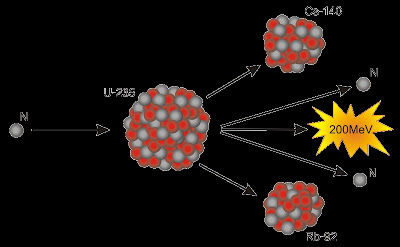

If not for CANDU reactors, D-T fusion would be an unattainable dream. “This makes deuterium-tritium fusion reactors impossible.” It could be fatal for the entire enterprise, he says. But for Daniel Jassby, a plasma physicist retired from Princeton Plasma Physics Laboratory (PPPL) and a known critic of D-T fusion energy, the tritium issue looms large. Scarce tritium is not the only challenge fusion faces the field must also learn to deal with fitful operations, turbulent bursts of plasma, and neutron damage ( see sidebar, below). Tritium leakages or prolonged maintenance shutdowns will eat away at that narrow margin. In a recent simulation, nuclear engineer Mohamed Abdou of the University of California, Los Angeles, and his colleagues found that in a best-case scenario, a power-producing reactor could only produce slightly more tritium than it needs to fuel itself. To compound the problem, some believe tritium breeding-which has never been tested in a fusion reactor-may not be up to the task. Fusion scientists wishing to fire up reactors after that may find that ITER already drank their milkshake. “It will consume a significant amount of what is available,” he says.

But once it begins energy-producing D-T shots, Alberto Loarte, head of ITER’s science division, expects the reactor to eat up to 1 kilogram of tritium annually. ITER’s first experiments will use hydrogen and deuterium and produce no net energy. Franklin/ Science (Data) ITER Research Plan within the Staged Approach, ITR-18-003, (2018) According to ITER projections, supplies will peak this decade, then begin a steady decline that will accelerate when ITER begins burning tritium. The few kilograms of commercially available tritium come from CANDU plants, a type of nuclear reactor in Canada and South Korea. The available tritium stockpile-thought to be about 25 kilograms today-will peak before the end of the decade and begin a steady decline as it is sold off and decays, according to projections in ITER’s 2018 research plan. The world’s only commercial sources are the 19 Canada Deuterium Uranium (CANDU) nuclear reactors, which each produce about 0.5 kilograms a year as a waste product, and half are due to retire this decade. Despite demand for it in electric car batteries, lithium is relatively plentiful.īut there’s a catch: In order to breed tritium you need a working fusion reactor, and there may not be enough tritium to jump-start the first generation of power plants. The high-energy neutrons released in fusion reactions can split lithium into helium and tritium if the reactor wall is lined with the metal. Most fusion scientists shrug off the problem, arguing that future reactors can breed the tritium they need. Nuclear reactors also produce tiny amounts, but few harvest it. But tritium, with a half-life of 12.3 years, exists naturally only in trace amounts in the upper atmosphere, the product of cosmic ray bombardment. That is certainly true for deuterium: Roughly one in every 5000 hydrogen atoms in the oceans is deuterium, and it sells for about $13 per gram. ITER is expected to consume most of the world’s tritium, leaving little for reactors that come after.įusion advocates often boast that the fuel for their reactors will be cheap and plentiful.

“What we found matches predictions,” says Fernanda Rimini, JET’s plasma operations expert.īut that achievement could be a Pyrrhic victory, fusion scientists are realizing. By getting to one-third of this breakeven point, JET offered reassurance that ITER, a similar reactor twice the size of JET under construction in France, will bust past breakeven when it begins deuterium and tritium (D-T) burns sometime next decade. Last year, the Canadian tritium fueled an experiment at JET showing fusion research is approaching an important threshold: producing more energy than goes into the reactions.
#Fission energy how to
The reaction could provide abundant clean energy-just as soon as fusion scientists figure out how to efficiently spark it. When tritium is combined at high temperatures with its sibling deuterium, the two gases can burn like the Sun. At $30,000 per gram, it’s almost as precious as a diamond, but for fusion researchers the price is worth paying. This wasn’t ordinary hydrogen but its rare radioactive isotope tritium, in which two neutrons and a proton cling together in the nucleus. Inside each drum was a steel cylinder the size of a Coke can, holding a wisp of hydrogen gas-just 10 grams of it, or the weight of a couple sheets of paper. In 2020, Canadian Nuclear Laboratories delivered five steel drums, lined with cork to absorb shocks, to the Joint European Torus (JET), a large fusion reactor in the United Kingdom. A version of this story appeared in Science, Vol 376, Issue 6600.


 0 kommentar(er)
0 kommentar(er)
